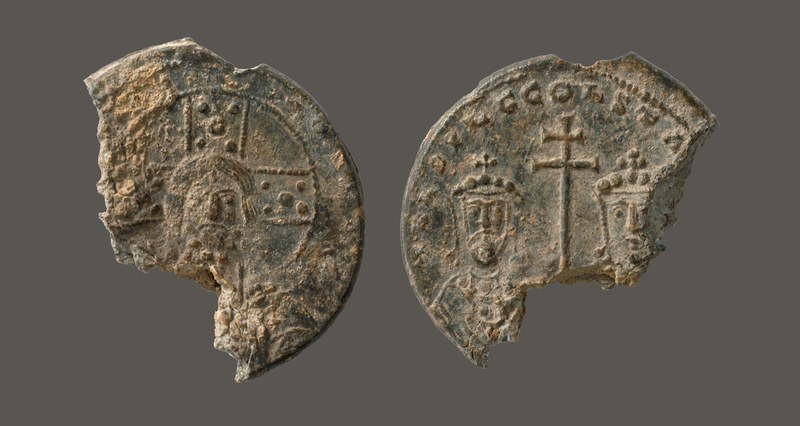
Basil II was 18 years old when John I died in 976. Almost immediately John's close ally and relative Bardas Skleros rebelled against Basil. By allying with the Phokas family (John I had murdered Nikephoros II Phokas), Skleros was defeated and forced into exile. From then until 985 the eunuch Basil Lekapenos, the parakoimomenos, largely ruled the empire for Basil II, much as he had done for the past thirty years. In 985 Basil removed Lekapenos from power. At the same time Bulgaria, conquered by John I, revolted under the leadership of Samuel. Samuel managed to conquer Thessaly, and in 986 to defeat Basil. This defeat led to the return of Bardas Skleros from exile, and at the same time Bardas Phokas revolted against Basil. The young emperor gained the assistance of Prince Vladimir of Kiev, who in return for a marriage alliance with Basil's sister lent Basil 6,000 men and agreed to convert to Christianity. Basil soon defeated both Phokas and Skleros, making him the undisputed ruler of Byzantium in 989. Basil spent much of the rest of his reign campaigning against Samuel of Bulgaria. He invaded Bulgaria in 991, but was forced to suspend the campaign until 1001 by troubles in the East. Basil campaigned nearly every year until 1014, when the Bulgarians suffered a crushing defeat. By 1018 Bulgaria was conquered and the Byzantine border was restored to the Danube for the first time since the reign of Phokas (602–610). New themes were organized in the conquered territories, and Serbia and Croatia where reduced to dependent territories. In the East Basil defeated Fatimid attempts to extend their power into northern Syria, compelled David of Tao to will his Iberian lands to him, and later acquired the lands of the king of Vaspurakan.
During the first thirteen years of his reign Basil developed a hatred of the established aristocracy. His novel of 996 attempted to curb the influence of powerful individuals and their families by extending the statute of limitations on property purchases back to Caesar Augustus. This immediately bankrupted a number of powerful families, reducing them to the level of the peasants who they had previously exploited. Although Basil technically governed alongside his brother Constantine VIII, no real power was ever allowed to fall into the hands of the younger emperor. Not content with his successes in the East and in the Balkans, Basil was preparing for an invasion of Sicily when he died in 1025. Having never married, he left the governance of the empire to his seventy-year- old brother, Constantine.

Two varieties of seal depict Basil II: the first shows him alone, the second with his brother Constantine, the last occurrence of the Macedonian, two-emperor type. A peculiarity are two examples of the first kind. These are taken by the editors of DO Seals 6 to be an abbreviation of autokrator, but it could also be a holdover of a John I inscription, reading autokrator Romaion (sole ruler of the Romans). By issuing two types of seal Basil was able to show the legitimate imperial family on his seals while also demonstrating that true power resided in his hands alone.























































